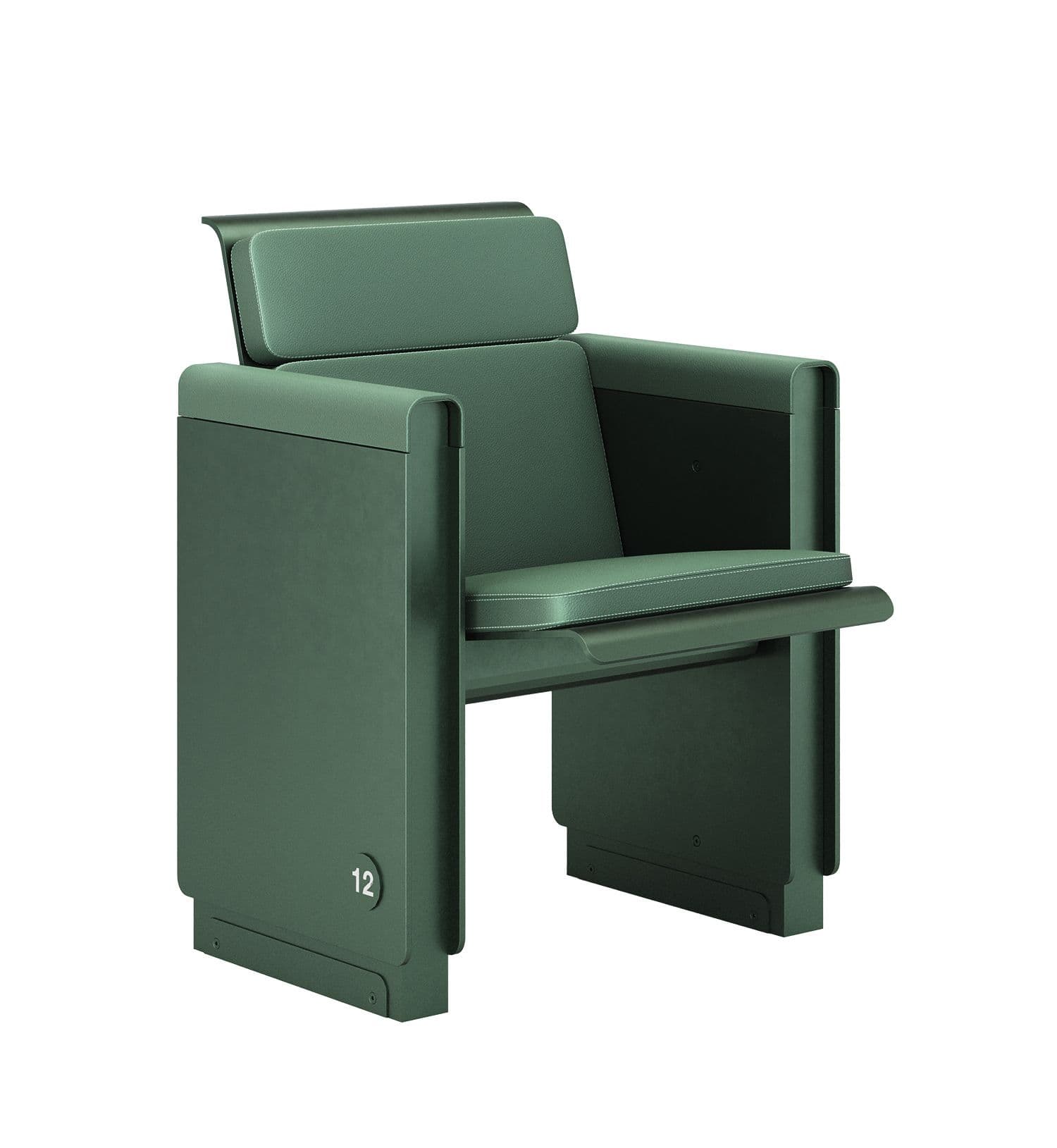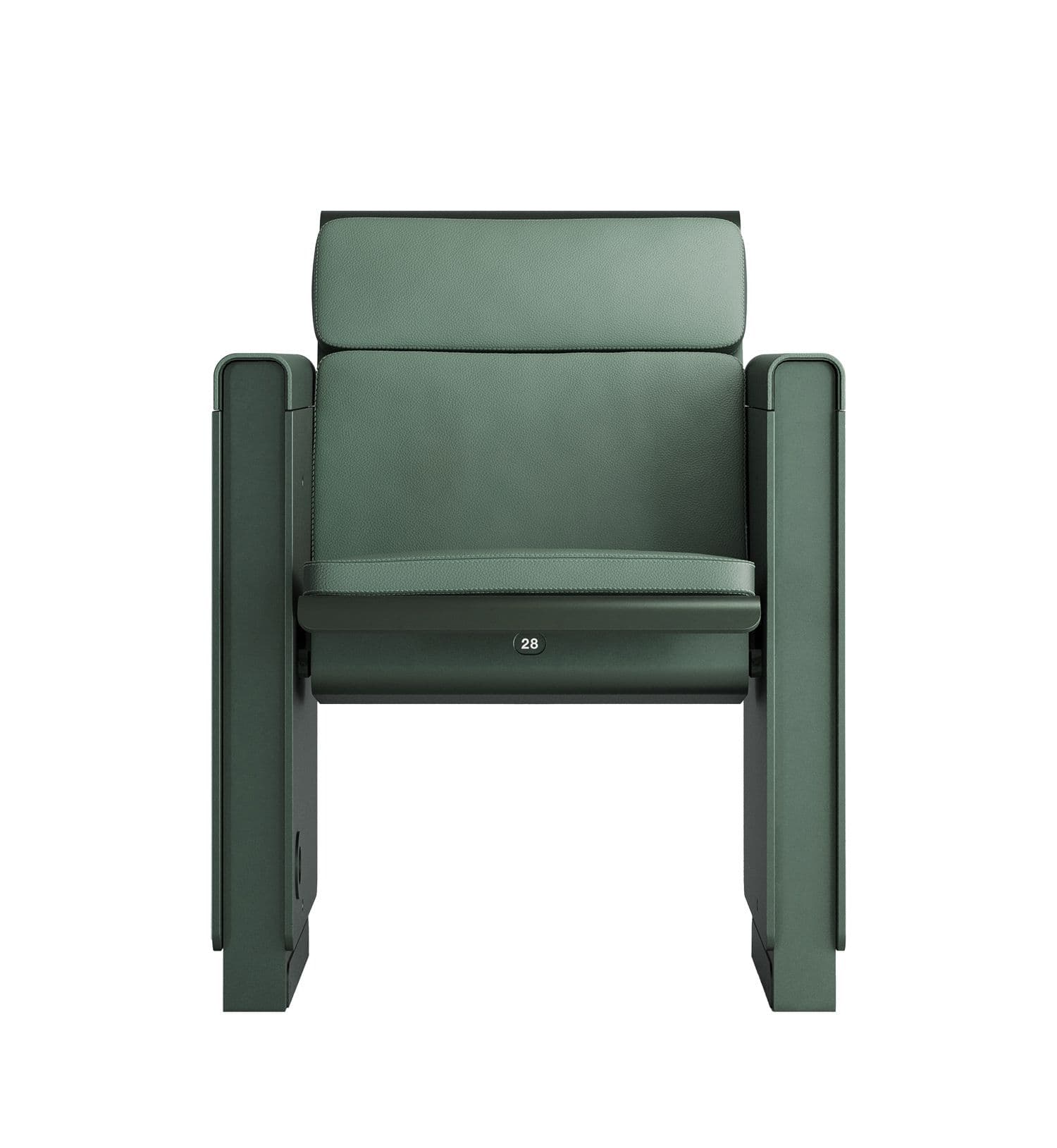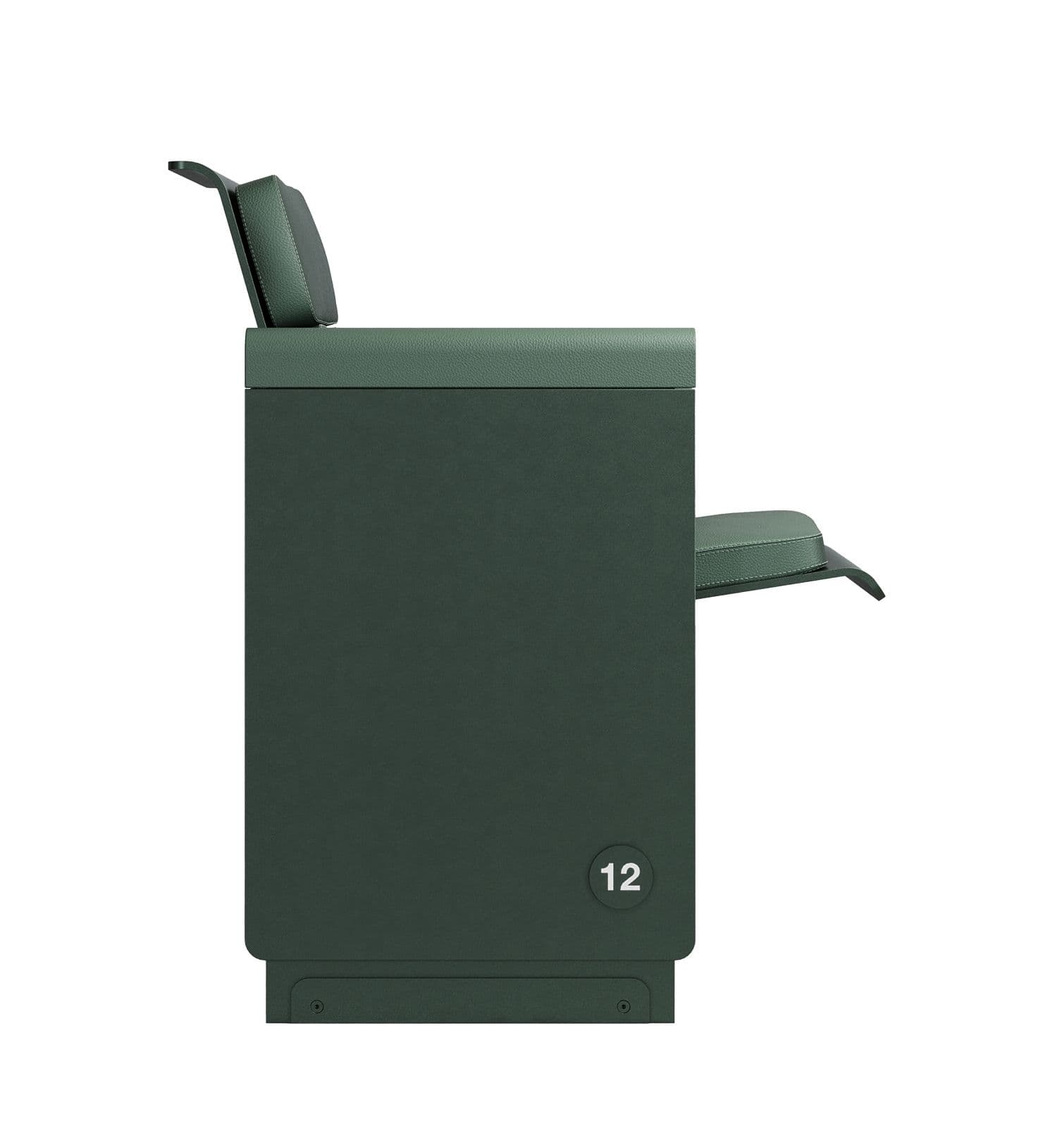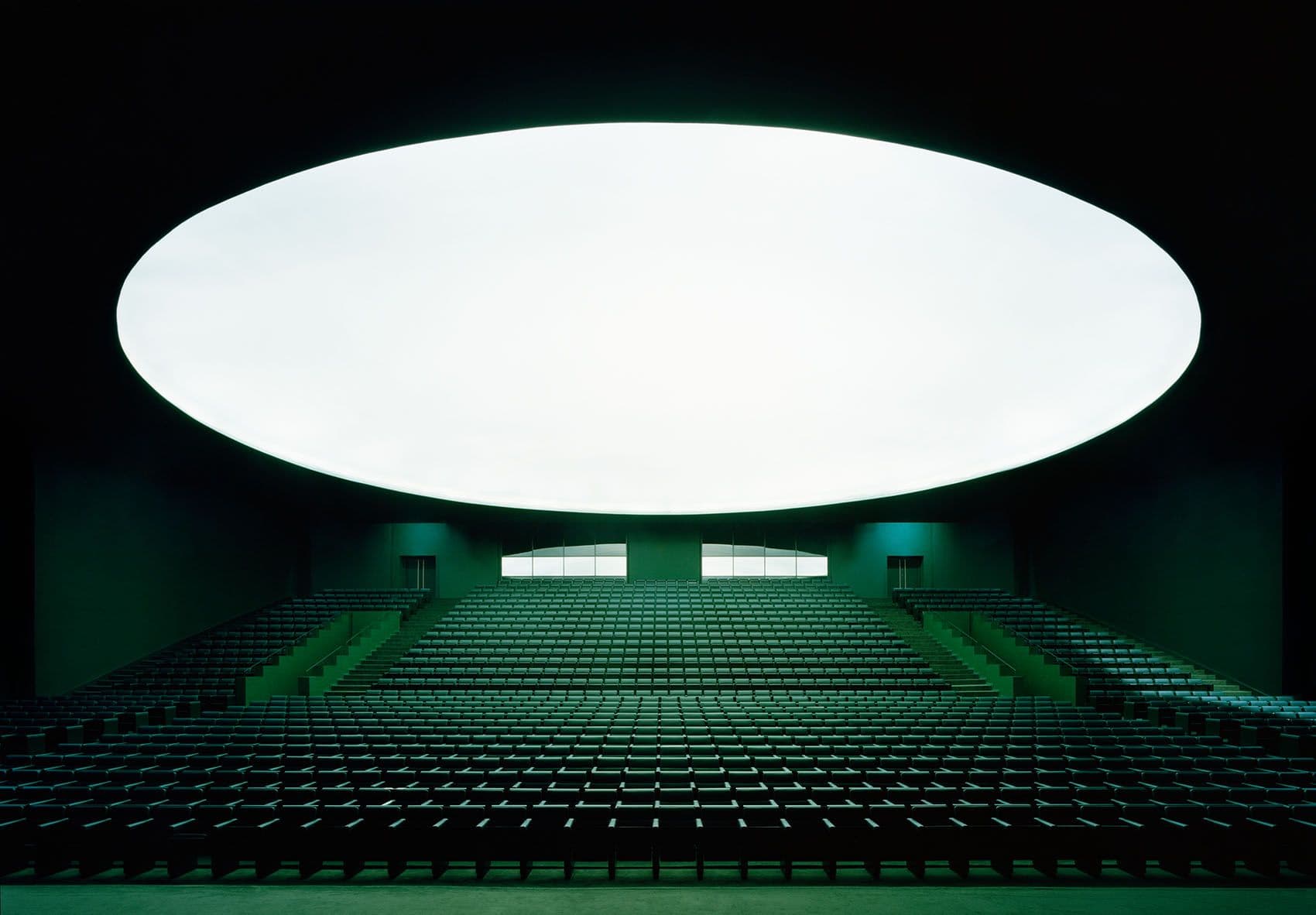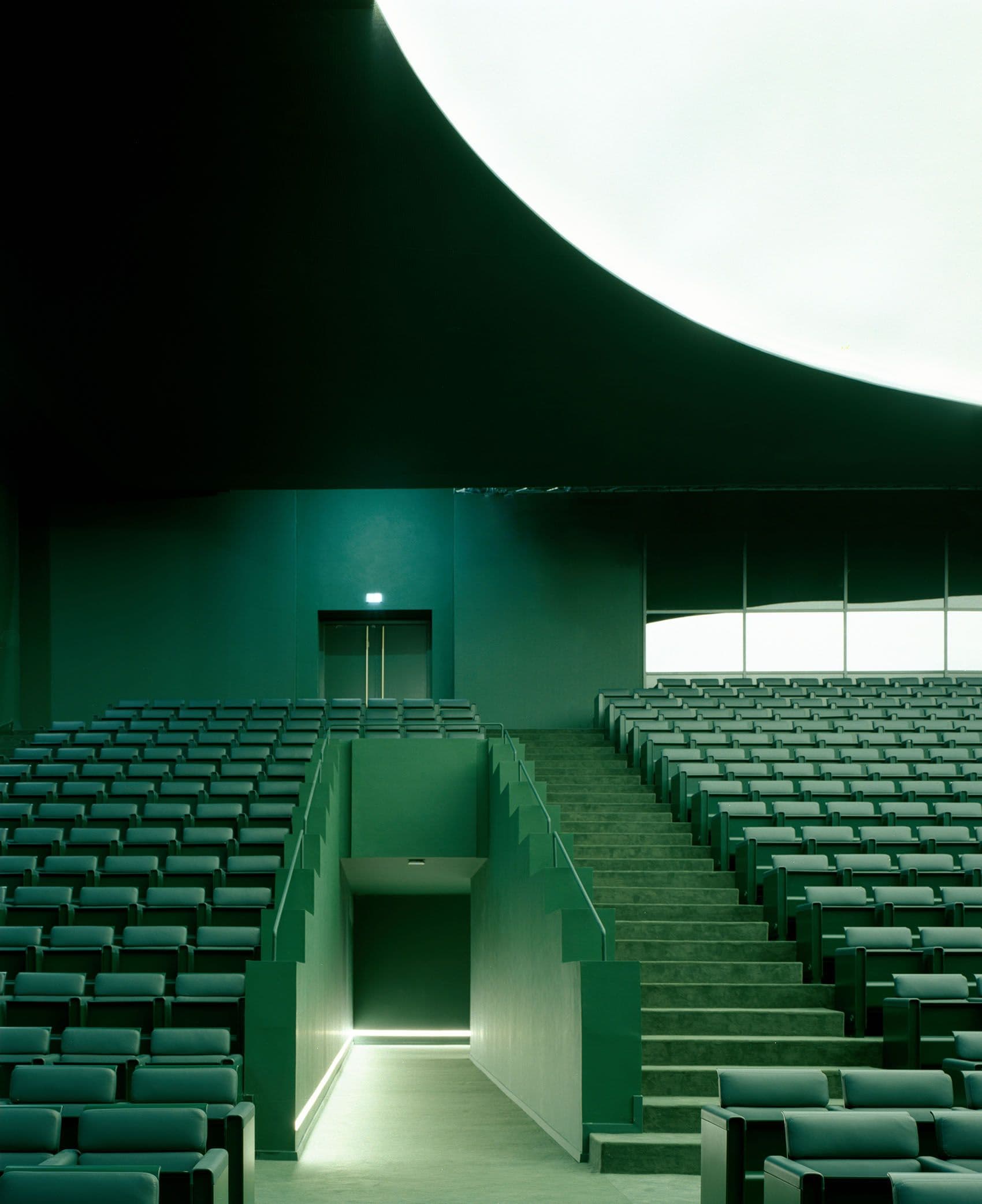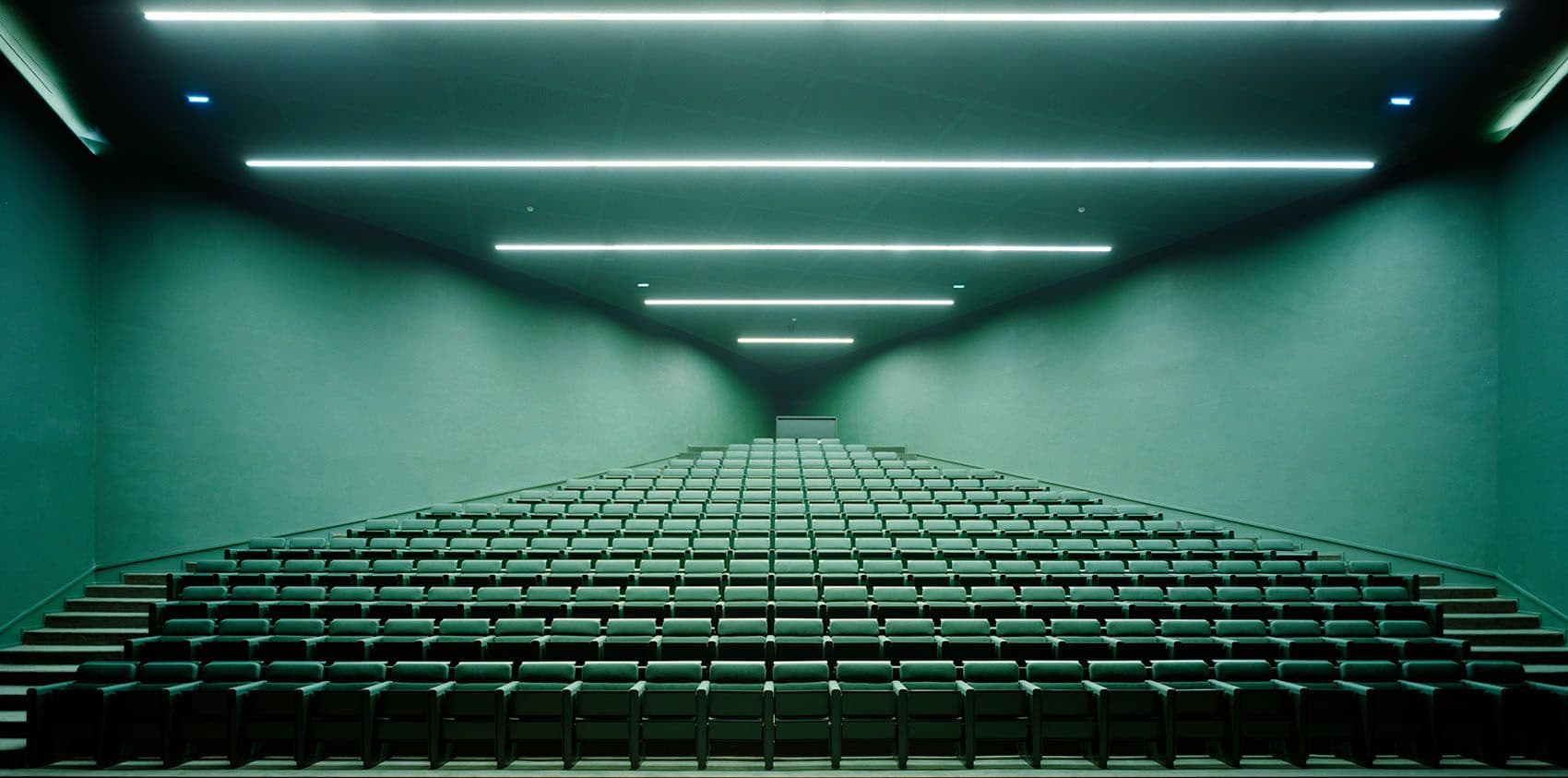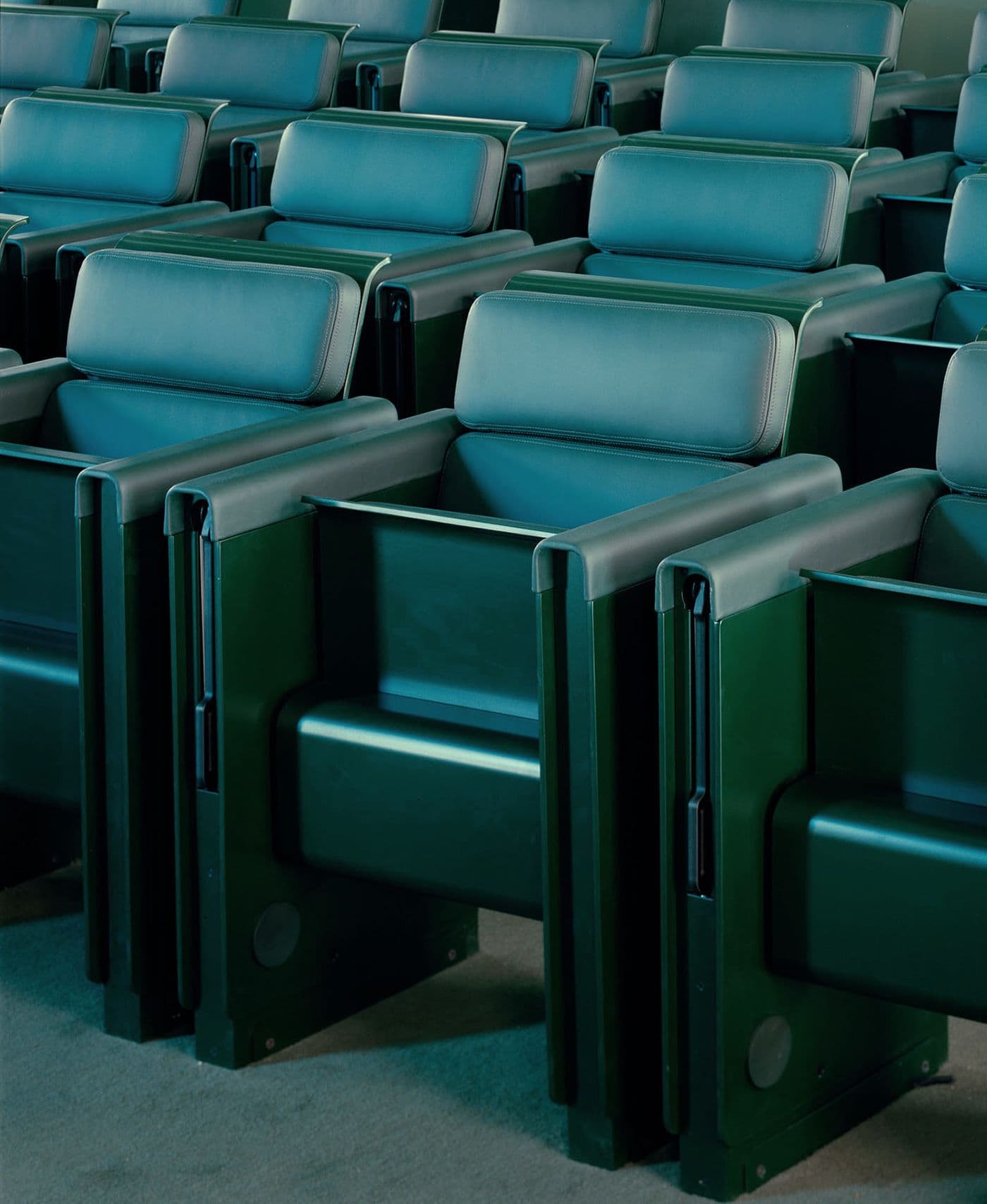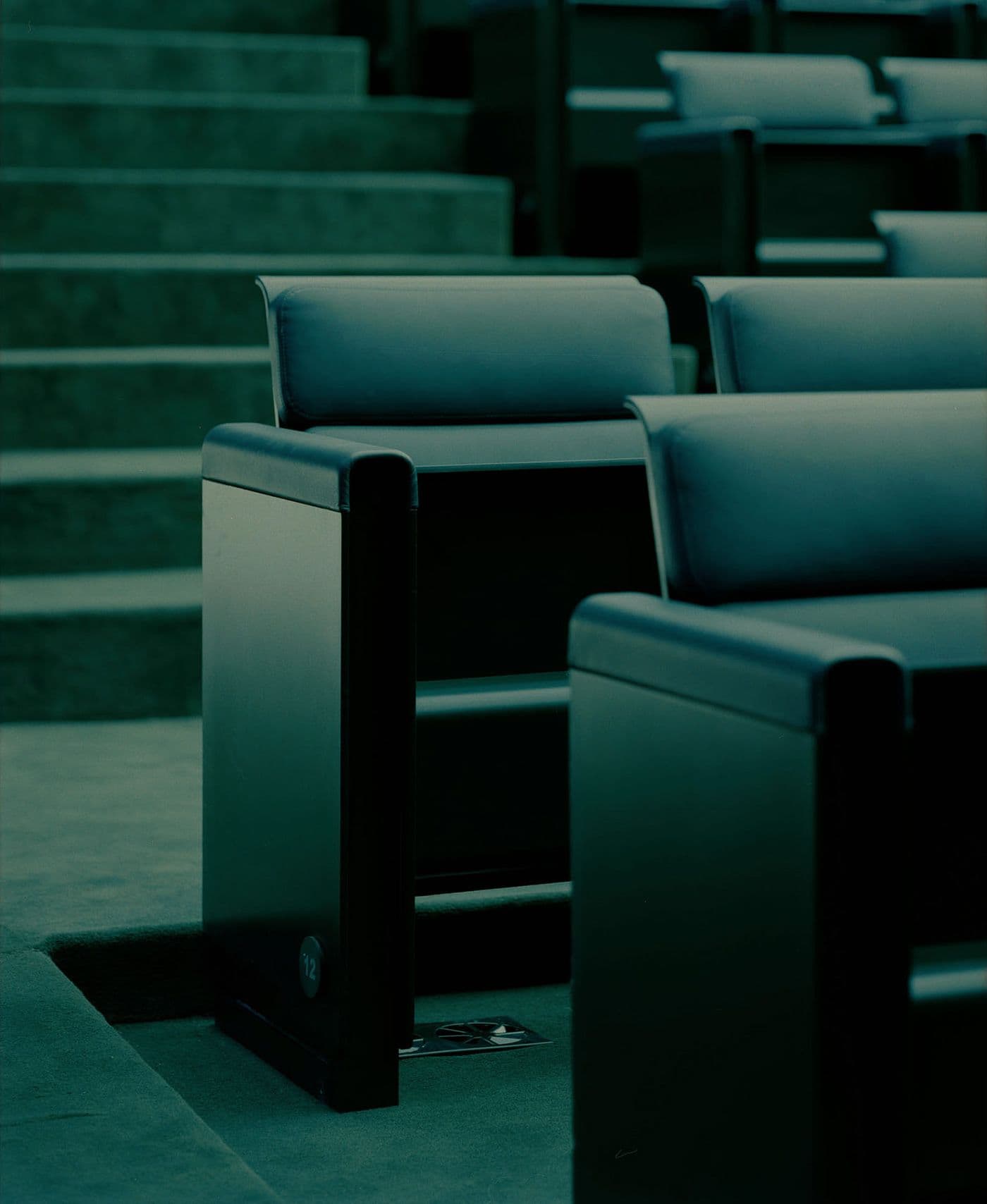Centre de Congrès at Université Mohammed VI Polytechnique
Designer
Bofill Taller de Arquitectura
Location
Morocco
The armchair designed for the Mohammed VI University project, envisioned by the architectural firm Bofill Taller de Arquitectura, is a perfect fusion of elegance and functionality. Featuring sleek lines and subtle curves, the chair achieves a visual lightness while providing exceptional ergonomic comfort. Crafted from durable aluminum and upholstered in full-grain leather, it presents a sophisticated and resilient design. Its automatic folding mechanism allows for space optimization, while the addition of features like retractable desks, electrification systems, and customizable numbering enhances its versatility. This compact and dynamic chair goes beyond mere functionality, serving as a sculptural piece that complements the architectural vision of Bofill Taller de Arquitectura.

The RBTA seating system goes beyond traditional auditorium and theatre seating. Through straight lines and subtle curved gestures, the architectural studio creates an effect of lightness in an ergonomic and highly comfortable object. A seat-sculpture. A compact and dynamic design with an effective visual lightness.
